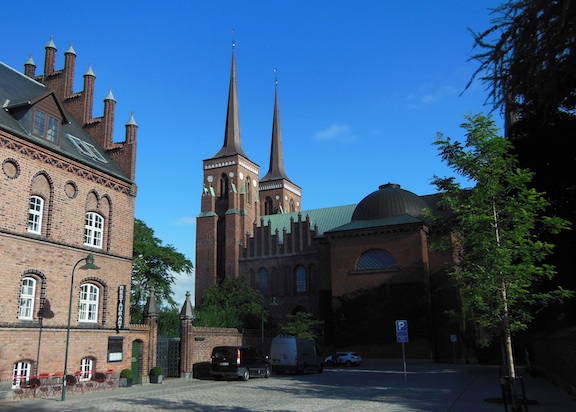
Roskilde Cathedral, Zealand, Denmark
photo Elroy Christenson 2016
Roskilde
Cathedral
Zealand island, Denmark
The Roskilde Cathedral

The Roskilde Cathedral is one of the most
important churches in Europe and is a UNESCO World Heritage
site. It was built during the Middle Ages. Construction
started in 1170 on this first Gothic cathedral of brick in
Europe. The city of Roskilde was established by King
Harald "Bluetooth" after uniting the Danes and Norwegians about
960. He had previously held court in Jelling where he
buried his parents in the Jelling Church. Roskilde was
more central to the country as a whole where he established a
royal farm. The small stave church that he had built was
his burial place after his death in 985/986. Roskilde town
resides on an protected fjord which probably also allowed for it
be used in preparations for Viking naval warfare.
"Roskilde is first mentioned (Roscylde). The first name is similar to the way the city was pronounced in the
local dialect: Rå-skylie." [Roskilde History web site - year 1022]
The first bishop of Roskilde was brought to Denmark from England by King Canute. When the
Archbishop Unwan of Hamburg found out, he became angry and captured the bishop who was forced to do penance
and swear an allegiance to the German archbishop. [Adam of Bremen - Roskilde web site.]
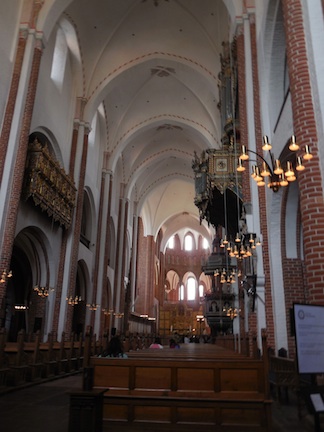
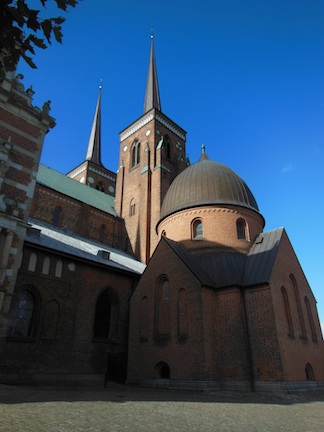
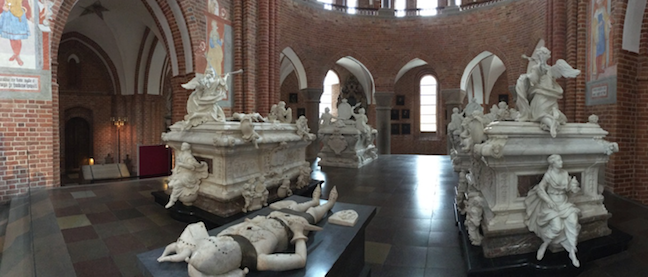
The present church started construction about 1060
and completed in 1080. There was a need to identify its
importance and a delegation was sent to Rome for a suitable
relict. It was decided to dedicate the cathedral to St.
Lucius, pope from 253 to 255. A skull of St. Lucius was
transported to Roskilde for its crept. At least thirty-eight
kings and queens of Europe are buried here. This is more
than any other church in Europe and range in dates form 985
to 2000. [wikipedia]
A fire swept through the town of Roskilde in 1443 destroying most of the city as well as inflecting major damage on the cathedral. Much rebuilding was done by 1460. However, the Reformation of 1536 saw the Bishop of Roskilde imprisoned. The catholic churches of Denmark then became the property of the king. Religious services were changed to a more public service and pews were installed in the cathedral. The head of the church was moved to Copenhagen. [wikipedia]
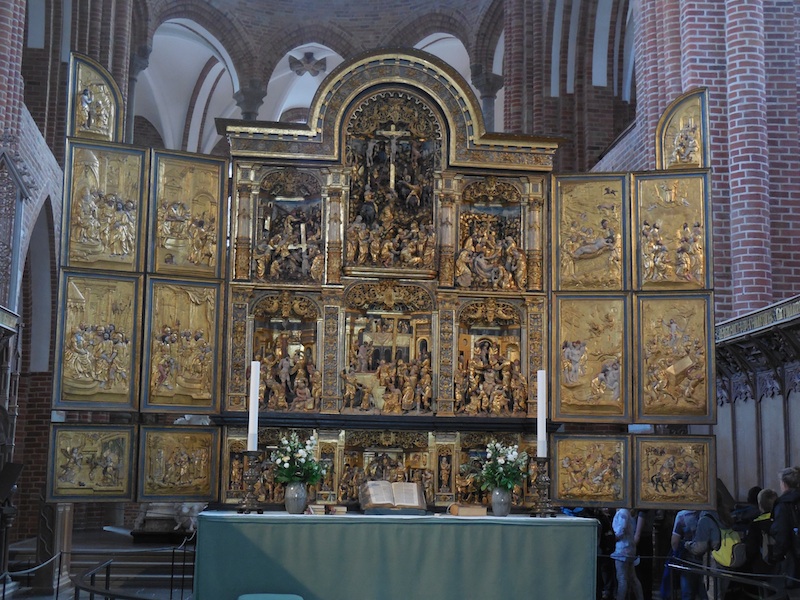
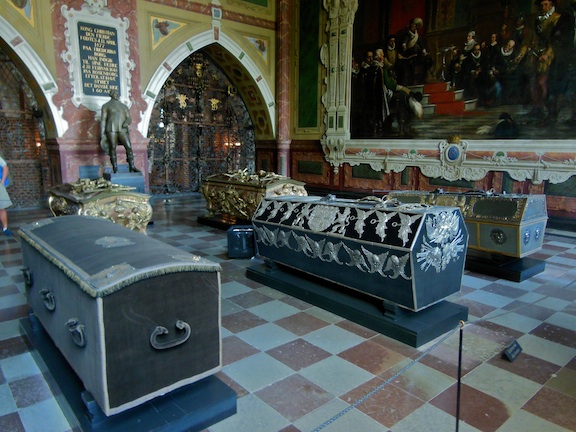
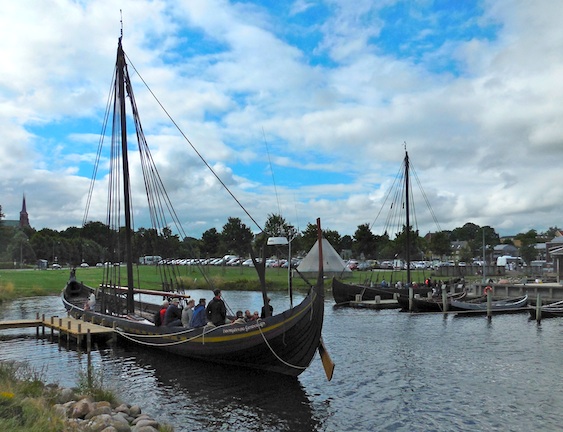
Harde Knud Signurdsson 814, including Harald I "Bluetooth" Gormssen (910-986)
source:
Elroy's Family Index || Denmark Family Locations || Ancestor Chart #1
_________________________________________________________________________________________________






All information and
photos included within these pages was developed by
the help of hundreds of researchers. The information
here is for the express purpose of personal
genealogical research and is freely offered as long
as this site is listed as a source. It may not be
included or used for any commercial purpose or
included in any commercial site without the express
permission of Elroy Christenson. Copyright Elroy
Christenson 1998-2020